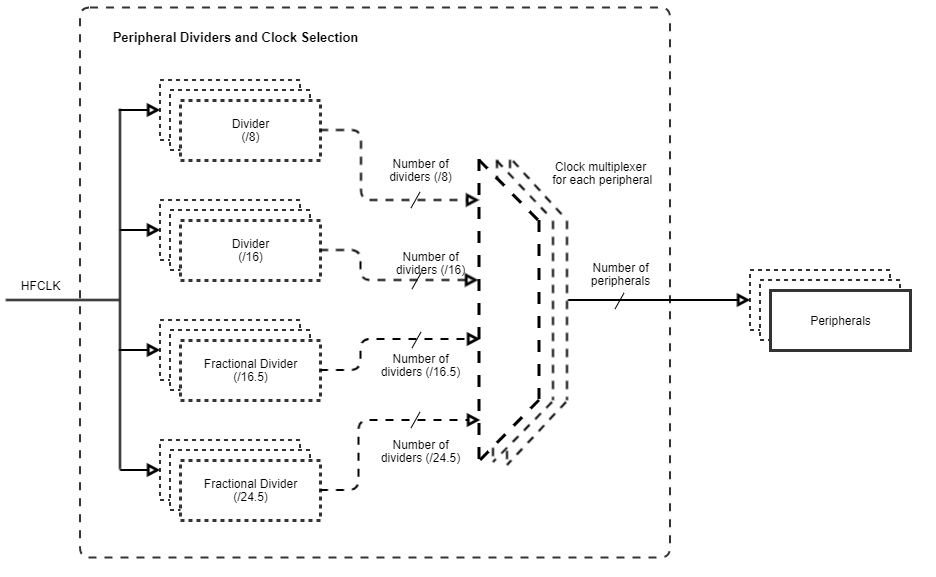There are multiple peripheral clock dividers that, in effect, create multiple separate peripheral clocks: More...
Modules | |
| Macros | |
| Functions | |
| Enumerated Types | |
There are multiple peripheral clock dividers that, in effect, create multiple separate peripheral clocks:
The availability and number of each type of dividers depends on the certain device family. Consult the Technical Reference Manual for your device for details.
The integer dividers work simply: a divider value of 1 means the output frequency matches the input frequency (that is, there is no change). Otherwise the frequency is divided by the value of the divider. For example, if the input frequency is 24 MHz, and the divider value is 10, the output frequency is 2.4 MHz.
The five fractional bits support further precision in 1/32nd increments. For example, a divider with an integer value of 3 and a fractional value of 4 (4/32 or 1/8) result in a divider of 3.125. Fractional dividers are useful when a high-precision clock frequency is required, for example, for a UART/SPI serial interface.

Each peripheral can connect to any one of the programmable dividers. A particular peripheral clock divider can drive multiple peripherals.
The SysClk driver also supports phase aligning two peripheral clock dividers using Cy_SysClk_PeriphEnablePhaseAlignDivider(). Alignment works for both integer and fractional dividers. The divider to which a second divider is aligned must already be enabled.